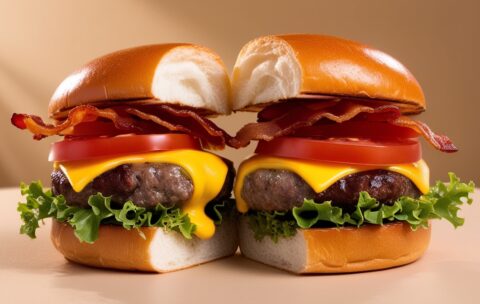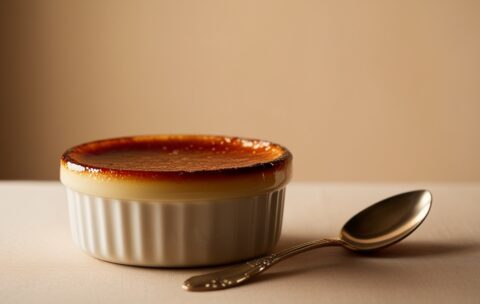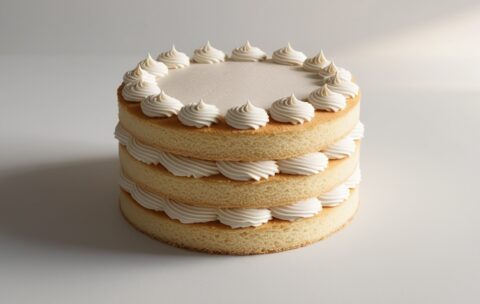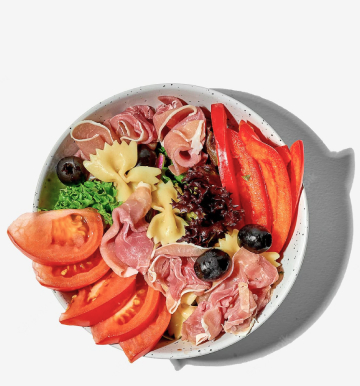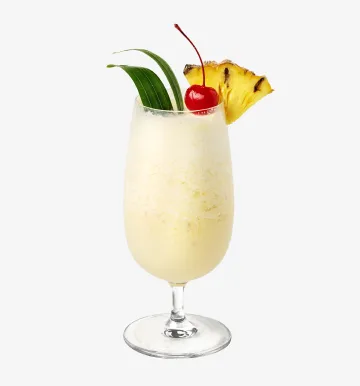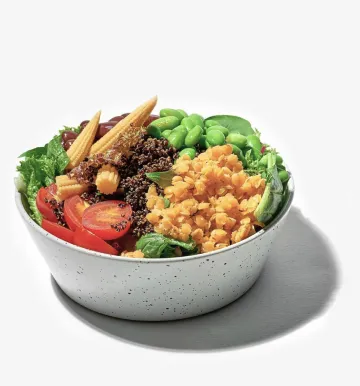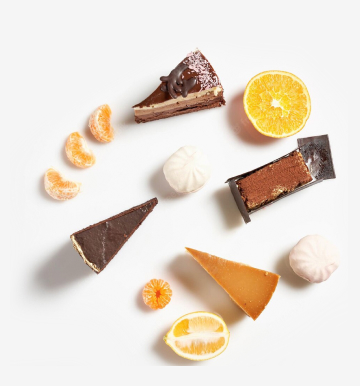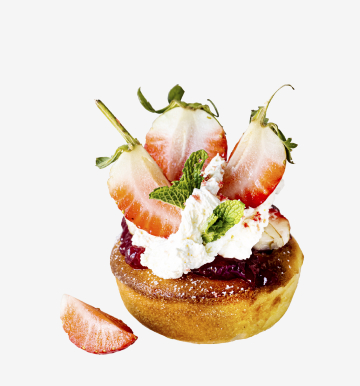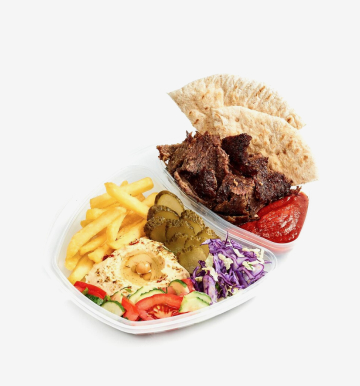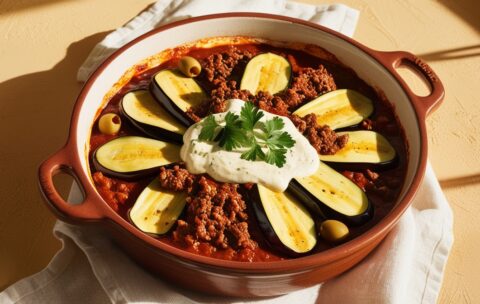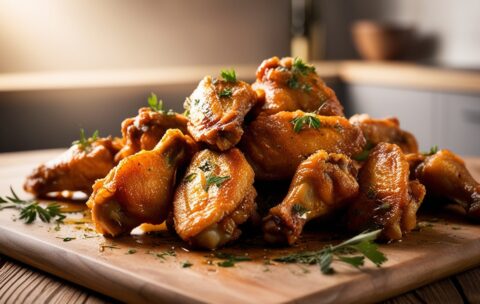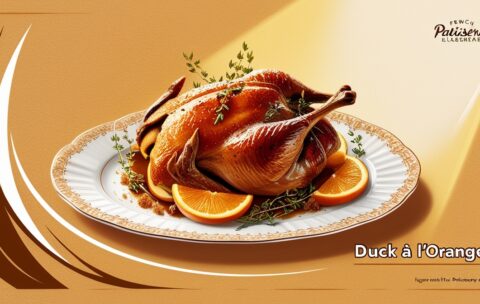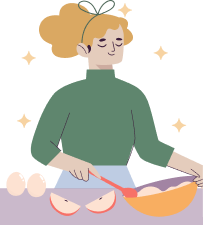Home Update 02
October 4, 2023 2025-06-05 13:04Home Update 02
Become a Home Chef
Learn to cook from scratch and master restaurant-quality meals in your own kitchen. Perfect for beginners and food lovers.

Our Top Courses
We've selected the best programs to get you started. Each course offers step-by-step lessons, hands-on recipes, and guaranteed results — even for beginners.
Coq au Vin
3 Lessons
2.3 hours
Intermediate
What you'll learn
Ingredient Selection & Preparation:
How to choose the right cut of chicken (whole, thighs, or a combination) and select complementary wine (e.g., Burgundy Pinot Noir or alternative regional varieties).
Proper techniques for trimming, seasoning, and preparing lardons, mushrooms, and root vegetables.
Braising Fundamentals:
The importance of searing chicken pieces for color and flavor development.
How to deglaze a Dutch oven or heavy-bottomed casserole with red wine, preserving all the fond (browned bits) on the pan bottom.
Flavor-Building Strategies:
Layering aromatics—onion, garlic, carrot, thyme, and bay leaf—to create depth.
Controlling heat and timing for a slow, gentle simmer that yields tender meat and a concentrated sauce.
Sauce Reduction & Finishing Touches:
Techniques for skimming excess fat and reducing the braising liquid to a velvety consistency.
Tips for adding mushrooms and optional garnishes (parsley, fresh herbs) at the final stage for maximum aroma and texture.
Plating & Serving Suggestions:
How to present Coq au Vin with traditional accompaniments (e.g., buttered noodles, mashed potatoes, crusty bread).
Strategies for reheating or holding the dish without sacrificing quality, making it ideal for dinner parties.
Classic Cheeseburger
4 Lessons
1.3 hour
Intermediate
What you'll learn
How to choose the right ground beef blend (fat-to-lean ratio) for juicy, tender patties
Seasoning techniques that enhance natural beef flavor without overpowering
Patty-shaping tips to avoid overworking meat and ensure even cooking
Proper grilling or pan-searing methods for desired doneness (from medium-rare to well-done)
Cheese selection and melting techniques for that signature gooey layer
Assembly order: layering bun, patty, cheese, toppings, and condiments for optimal taste and texture
Creative twists—beyond the classic: variations in cheeses, buns, and sauce recipes
Side suggestions and plating ideas to complement your cheeseburger
Louis XIII Pure Gold Cocktail
4 Lessons
2.3 hours
Intermediate
What you'll learn
How to select and handle Louis XIII Cognac to preserve its intricate aromatic profile
Techniques for incorporating edible gold safely and attractively
Crafting a saffron-infused vermouth modifier that enhances, not overpowers, the cognac’s rancio
Proper stirring and dilution to maintain clarity while achieving silky texture
Choosing quality orange bitters and balancing their citric-spice character against the spirit base
Presentation tips: from glass choice to garnish placement for maximal visual impact
Serving temperature guidelines to showcase every nuance of ultra-aged cognac
Crème Brûlée
5 Lessons
1.3 hour
Intermediate
What you'll learn
Custard Fundamentals (Paragraph):
You’ll discover how to create a smooth, silky custard by properly tempering egg yolks and controlling oven temperature during baking.
Flavor Infusion (List):
Selecting and preparing vanilla beans vs. extract
Balancing sugar and cream ratios for optimal richness
Incorporating subtle flavor variations (e.g., citrus zest, liqueur)
Caramelization Technique (Paragraph):
Master the process of evenly sprinkling sugar over the cooled custard and using a torch (or broiler) to achieve a perfectly caramelized, glass-like crust without burning.
Beef Tacos
6 Lessons
2.5 hours
Intermediate
What you'll learn
Beef Selection & Preparation: How to choose between ground beef, skirt steak, or chuck roast; trimming and cutting techniques for even cooking.
Seasoning & Marinades: Crafting a balanced spice blend (chili powder, cumin, oregano) and optional citrus-based marinade for tender, flavorful beef.
Cooking Methods: Techniques for stovetop sautéing, grilling, and slow-simmering to achieve optimal texture and taste.
Tortilla Choices & Warming: Differences between corn and flour tortillas; methods to warm or lightly char tortillas on a skillet or griddle.
Salsa & Sauce Creation: Simple recipes for pico de gallo, salsa verde, and creamy sauces (e.g., crema or chipotle aioli), including ingredient ratios and seasoning adjustments.
Taco Assembly & Layering: Order of layering (meat, salsa, cheese, garnishes) to prevent sogginess; tips on portion sizing and presentation.
Garnish Variations: Ideas for fresh cilantro, diced onions, lime wedges, pickled jalapeños, and cotija cheese to enhance each bite.
Serving & Pairings: Suggestions for sides (rice, beans, elote) and beverage pairings (margaritas, aguas frescas) to complete the meal.
Wagyu Truffle Burger
4 Lessons
1.3 hour
Intermediate
What you'll learn
How to source authentic wagyu beef and distinguish grading (A5 vs. A3, etc.).
Techniques for gently forming wagyu patties that maintain optimal marbling and juiciness.
Methods for cleaning, slicing, and using fresh truffle, as well as alternatives like truffle oil or preserved truffle.
Seasoning balance: how much salt and pepper to enhance wagyu flavor without overpowering it.
Proper bun-to-patty ratio: selecting and toasting a buttery brioche bun to complement the richness.
Topping assembly: choosing and melting premium cheese (such as aged Gruyère or Taleggio) to pair with truffle.
Finishing touches: creating a truffle-infused aioli or mayonnaise, and adding crisp greens and caramelized onions to balance textures.
Lobster Roll with Garlic Butter
4 Lessons
3.3 hours
Intermediate
What you'll learn
How to select, buy, and cook fresh lobster meat (from boiling/steaming to picking meat).
Techniques for making flavored garlic butter (infusing with garlic, herbs, lemon zest).
Proper seasoning and temperature control to keep lobster tender and juicy.
Best practices for toasting split-top hot dog buns or brioche rolls so they hold up and absorb butter.
How to assemble and garnish a Lobster Roll (balancing textures with finely chopped celery, chives, or parsley).
Fundamentals of Classic Sponge Cakes
2 Lessons
1.2 hour
Intermediate
What you'll learn
Egg-Based Leavening Principles
How egg foam structure traps air for lift
Differences between whole-egg, yolk-only, and white-only foams
Impact of sugar timing on foam stability
Classic Sponge Variations
Genoise: Creating a warm, melted-butter-enriched sponge with a tight crumb
Victoria Sponge: Whisking eggs and sugar to ribbon stage, then folding in butter and flour
Chiffon: Combining whipped egg whites with oil-based batter for ultra-light texture
Mixing & Folding Techniques
Whisking by hand vs. stand mixer: pros, cons, and timing adjustments
Proper folding to avoid deflating the foam—using rubber spatula vs. whisk
Identifying the “ribbon stage” and when to stop folding
Pan Preparation & Baking
Choosing the right pan: bottom-lined vs. unlined; tube pans vs. straight-sided
Lining, greasing, and tapping techniques to prevent sticking
Oven temperature calibration and timing for optimal rise
Troubleshooting Common Issues
Deflated cakes: Causes (undercooked foam, overfolding, abrupt temperature changes) and fixes
Uneven surfaces or excessive doming: Adjusting rack position and heat distribution
Dry or gummy crumb: Balancing moisture with ingredient ratios
Finishing & Assembly
Leveling and slicing sponge layers for clean, even stacks
Simple syrup soaking for added moisture without collapsing structure
Old Fashioned
7 Lessons
1.9 hour
Intermediate
What you'll learn
How to properly muddle a sugar cube (or measure simple syrup) with bitters to create the foundation of an Old Fashioned.
Differences between using bourbon versus rye whiskey: flavor profiles, proof considerations, and regional traditions.
Techniques for selecting and expressing citrus peel to maximize aromatic oils without adding bitterness.
Best practices for choosing ice (large cubes or spheres) to control dilution and maintain temperature.
Stirring methods that achieve a silky texture and proper dilution—timing, tool grip, and motion.
Variations on the classic recipe, such as adding a barspoon of water, swapping citrus types, or using flavored bitters.
Niçoise Salad
3 Lessons
3.5 hours
Intermediate
What you'll learn
How to cook baby potatoes to a tender yet firm “bite”
Blanching haricot verts (thin green beans) for vibrant color and snap
Properly searing fresh tuna (or preparing high-quality canned tuna)
Crafting a classic Dijon-vinaigrette with shallots and garlic
Composing and plating a balanced, restaurant-style Niçoise
Choose Your Category
Our courses are grouped by category to help you find what suits your taste. From quick dinners to gourmet desserts — start with what inspires you.



About Our Culinary Journey
We are passionate about bringing the joy of cooking to everyone. Our mission is to empower food lovers with the skills and confidence to create delicious meals at home. With expert chefs, innovative teaching methods, and a love for culinary arts, we’re here to inspire your kitchen adventures.
Our Commitment
Everyone can cook well. Our courses offer clear guidance to ensure success for all skill levels.
Community Focus
Join our foodie community. Share creations and grow in a supportive environment.
Why Choose Our Culinary Courses?
Our courses are designed to make cooking fun, accessible, and inspiring. Whether you're a beginner or a seasoned cook, our unique features will help you elevate your skills and unleash your culinary creativity.

Expert Instructors
Learn from world-class chefs with years of experience. Our instructors guide you step-by-step, sharing professional tips.
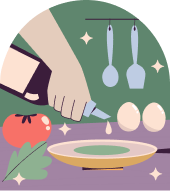
Flexible Learning
Study at your own pace, anytime, anywhere. Our online platform offers 24/7 access to lessons, so you can fit cooking into your busy schedule.

Hands-On Recipes
Practice with real recipes designed for all skill levels. From classic dishes to modern creations, you’ll master meals that impress every time.
What Our
Students Say
Hear from our happy students who have transformed their cooking skills with our courses. From beginners to seasoned cooks, our community loves sharing their success stories!
"This course completely changed how I cook! The instructors are so knowledgeable, and the lessons are easy to follow. I’m now confident making dishes I never thought I could."
Emma Johnson
"I love the flexibility of these courses. I can learn at my own pace and still feel supported. The recipes are amazing, and I’ve impressed my family with new dishes!"
Michael Chen
"The vegan cooking course was a game-changer for me. I learned so many creative ways to make plant-based meals that taste incredible. Highly recommend!"
Sophie Martinez
"The hands-on approach made learning so fun! I went from burning toast to baking artisan bread in weeks. Thank you for such an inspiring experience!"
James Carter
Discover Our Newest Culinary Courses
Get inspired by our latest additions! These exciting courses bring fresh ideas and techniques to your kitchen, perfect for food lovers eager to try something new. Browse our carousel to find your next culinary adventure.
Cobb Salad
6 Lessons
2.9 hours
Intermediate
What you'll learn
How to poach or grill chicken breast for optimal juiciness
Technique for rendering and crisping bacon
Proper avocado selection and slicing without browning
Making a balanced Dijon-honey vinaigrette
Layering and plating the salad for visual appeal
Variations to adapt to dietary preferences (vegetarian, gluten-free)
Syrniki with Sour Cream and Berry Jam
3 Lessons
1.8 hour
Intermediate
What you'll learn
Choosing & Preparing Cheese
How to select the right fresh farmer’s cheese (tvorog or quark) for optimal moisture and texture.
Techniques for draining excess liquid to avoid overly wet dough.
Dough Formation & Consistency
Balancing ingredients—cheese, eggs, flour, and a hint of sugar—to achieve a tender but firm pancake batter.
Adjusting flour amounts based on cheese moisture to prevent stickiness while preserving fluffiness.
Shaping & Frying Techniques
Forming uniform rounds without overworking the dough, ensuring even cooking.
Controlling pan temperature and oil quantity for a crisp exterior and soft interior.
Accompaniments & Serving
Preparing sour cream to the right consistency—stirring in lemon zest or sugar if desired.
Selecting or making berry jam (strawberry, raspberry, or mixed) to enhance sweetness and color contrast.
Plating strategies that showcase the contrast between golden syrniki and vibrant toppings.
Flavor Variations & Customizations
Ideas for adding vanilla, citrus zest, or cinnamon directly to the batter for subtle flavor boosts.
Alternative toppings such as honey, fresh fruit slices, or nut butters.
Panna Cotta
5 Lessons
2.4 hours
Intermediate
What you'll learn
The fundamentals of making a perfectly smooth, classic Vanilla Panna Cotta with no grainy texture.
How to bloom and incorporate gelatin for optimal set and mouthfeel.
Techniques for infusing cream with aromatics (e.g., vanilla beans, citrus zest, coffee grounds) without overcooking.
Troubleshooting common issues (e.g., weeping, over‐firm Panna Cotta, air bubbles).
Recipe adaptations for dietary preferences (e.g., coconut-based Panna Cotta for a dairy-free alternative, agar-agar substitutions for vegetarian).
Creative topping and garnish ideas: fruit coulis, macerated berries, caramel shards, chocolate curls, and edible flowers.
Elegant plating and serving methods (serving in molds, serving “naked” in jars, layering with compotes).
French Gateau & Entremet Principles
2 Lessons
1.3 hour
Intermediate
What you'll learn
Fundamental Structures: How to build entremets layer by layer—choosing and baking the right sponge (génoise, Joconde, biscuit cuillère), creating thin croustillant layers, and assembling mousse and bavarois tiers for height and stability.
Texture & Temperature Management: Techniques to ensure each component sets properly (e.g., mousse firmness, gelatin bloom, glaze viscosity) and how to keep layers distinct without bleeding.
Flavor Profiling & Balance: Pairing fruit purées, chocolate, nuts, and creams to achieve harmonious taste profiles. Understanding acidity, sweetness, and how to cut richness with complementary elements (fruit inserts, crunchy praline).
Advanced Finishing Techniques: Preparing and applying a smooth mirror glaze, torching velour sprays, using transfer sheets, and piping delicate decorations. Learning how to achieve a polished, professional look every time.
Assembly & Troubleshooting: Best practices for unmolding, repositioning, and storing entremets. Identifying and correcting common issues—sogginess, collapsed layers, uneven glazes.
Presentation & Plating: Strategies for cutting perfectly even slices, garnishing with textures (tuile, cocoa nibs, spun sugar), and arranging plated portions so they look as good as they taste.
Moussaka
3 Lessons
1.1 hour
Intermediate
What you'll learn
How to choose and prepare eggplants (salting/removing bitterness, proper slicing, and roasting) for ideal texture.
Techniques for browning ground lamb or beef, layering in tomato paste, crushed tomatoes, and seasonings (cinnamon, oregano, allspice).
Steps to make a silky-smooth béchamel sauce: roux creation, milk tempering, seasoning, and controlling thickness.
Methods for constructing Moussaka “assembly”—layering eggplant, meat sauce, and béchamel—to ensure even baking.
Guidelines for baking time and temperature so the top turns golden brown without drying out the filling.
Presentation tips: letting Moussaka rest for clean slices, garnishing with chopped parsley, and pairing with Greek salad or crusty bread.
Vegan & Gluten-Free Cake Innovations
3 Lessons
1.5 hour
Intermediate
What you'll learn
Flour Blends & Ratios: How to create balanced gluten-free flour mixes (almond, oat, rice, sorghum) and adjust for different cake styles (sponges, pound cakes, chiffon).
Binder Techniques: Use flaxseed meal, chia gel, and aquafaba as egg replacers to provide lift and cohesion; troubleshoot sticky or crumbly batters.
Moisture Control: Incorporate nondairy milks (almond, oat, coconut), fruit purées, and oil ratios to maintain tenderness without a gummy crumb.
Sweetener Alternatives: Work with maple syrup, coconut sugar, and date paste; understand how liquid versus granulated sweeteners affect texture and browning.
Flavor Innovations: Develop unique cake profiles—matcha-coconut layer, cacao-beet marble, citrus-herb infusion—using natural colorants and extracts.
Frosting & Filling Adaptations: Prepare stabilized coconut whipped cream, aquafaba meringue buttercream, and avocado-chocolate ganache; learn to pipe and decorate without dairy.
Baking Adjustments: Modify oven temperatures, bake times, and pan preparations for even rise and minimal collapse in vegan/gluten-free batters.
Troubleshooting: Identify and fix issues like dense crumb, dryness, or collapse; use gentle folding, resting times, and moisture tests to ensure success.
Cinnamon Sugar–Coated Churro Cake Bites
3 Lessons
4 hours
Intermediate
What you'll learn
How to bake and crumble a base cake optimized for cake bites
Ratio of cake crumbs to filling for ideal texture and binding
Frying vs. baking methods for a golden, light crust
Blending and heating cinnamon-sugar coating for crisp adhesion
Shaping techniques for uniform, crack-free bites
Serving and storage tips to keep bites fresh and crunchy
The Ultimate Crispy Chicken Wings Masterclass
3 Lessons
4 hours
Intermediate
What you'll learn
How to inspect and choose high-quality chicken wings for optimal taste and texture.
Proper trimming, joint separation, and brining methods to maximize moisture retention.
Seasoning strategies and marinade formulations that enhance depth of flavor.
Key differences between oven-baking, deep-frying, and air-frying to achieve different levels of crispiness.
Temperature control, timing, and airflow management to guarantee a golden, crunchy crust.
Duck à l’Orange
2 Lessons
2.6 hours
Intermediate
What you'll learn
How to properly score and season duck breast (or prepare a whole duck) for even fat rendering and a crisp exterior.
Techniques for searing and roasting duck to medium-rare (internal temperature ~135 °F/57 °C) while maintaining juicy meat.
Fundamental steps for making an orange reduction: zesting, juicing, and balancing sweetness, acidity, and depth with stock and aromatics.
Methods for deglazing the pan and incorporating pan drippings into the sauce for added umami.
Strategies for finishing the sauce (mounting with butter, straining) so it coats the duck without becoming cloying.
Plating suggestions: slicing the breast, spooning sauce without drowning, and garnishing with orange segments or microgreens.
Duck Breast with Caramelized Apples and Port Wine Sauce
2 Lessons
1.9 hour
Intermediate
What you'll learn
How to score and season duck breast for optimal rendered fat and crisp skin
Techniques for safely rendering duck fat in a cold pan and achieving uniform sear
Steps to caramelize apple wedges using butter, brown sugar, and a pinch of cinnamon
Methods for constructing a port wine reduction with shallots, herbs, and a splash of balsamic
Timing coordination to rest the duck and serve apples and sauce at the perfect temperature


